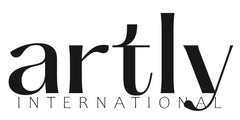Postmodern Art: An Overview

Sometime in the 1970's, the impulses that propelled Modern art waned, coinciding with changes in the social and political landscape. It is generally agreed Postmodernism spans 1970-1989 and includes movements such as Neo-Expressionism, Appropriation Art, Street Art, Installation Art, and Performance Art, among others.
Context
While Modernist art aimed to express universal truths and pursue objective reality, Postmodern art reflected a shift towards subjectivity and skepticism. Additionally, the avant-garde of modernism lost its distinctive role as a source of innovation. This decline can be attributed to broader social changes, as Postmodern art emerged in the context of a postindustrial society characterized by rampant consumerism. Political philosophy professor and artist, Geoff Wells, writes, “Postmodernism is sometimes described as a critical, even conservative, response to Modernism, although one should be careful with this. But in this way, the Postmodern sees in Modernism a devolution into kitsch and mass consumption of cultural objects through (here a critique of capitalism) mass production."
The dominant tendency of Postmodern art is pluralism, in which a number of styles and trends coexist simultaneously. Some of the first art to be called Postmodern questioned one of Modernisms basic notions, that an individual can create something totally original. If Modernism was characterized by constant creation of new styles, Postmodern artists tended to recycle fragments from previous movements and ideas. From these fragments, they would create works full of historical references and allusions to popular culture. Postmodernisms focus on contradiction and irony was a way to highlight the constructed nature of reality and challenge the notion of a singular, coherent truth while encouraging a more critical and skeptical approach to understanding the world.
Postmodern Photography
Cindy Sherman is the quintessential Postmodern artist and a master of the art of parody, impersonation, and cliches. In her series of works, Untitled Film Still, she cleverly positions herself in settings that reference well-known plots of old movies, using this as a means to delve into the complex themes of identity and the roles assigned to women by popular culture. Through her photographs, Sherman offers a broader commentary on contemporary culture, highlighting the prevalence of doctored images that aim to manipulate consumers. This constant stream of manipulated visuals has resulted in a society that struggles to discern between fact and fiction, blurring the lines between what is real and what is fake.
Canadian artist Jeff Wall is known for his ability to create detailed illusions through photography. Unlike traditional photographers who aim to capture reality, Wall deliberately sets up his scenes to challenge the notion that the camera only records truth. His photographs often resemble documentary images, but upon closer inspection, reveal themselves to be carefully constructed compositions. Wall's work not only seeks to rival large-scale history paintings and glossy advertisements, but also borrows the format of color transparencies mounted in large light boxes from modern advertising, enhancing the persuasive power of his art. Wall, like Cindy Sherman, incorporates the rules of cinematography into his photographic practice.
Neo-Expressionism
Neo Expressionism emerged as one of the pioneering Postmodern movements, characterized by a return to the Expressionist styles that prioritize the artist's inner self over the external appearance of the subject matter. In Germany, this revival of Expressionism held political significance due to the suppression of original Expressionist works under Nazi rule. Anselm Kiefer, a prominent Neo-Expressionist artist, grappled with his country's Nazi past and sought to comprehend the nature of madness. His artwork, Heath of the Brandenburg March, portrays a scorched and desolate landscape, symbolizing the devastating impact of war on the Brandenburg region during World War II. Through his evocative imagery, Kiefer confronts viewers with the weight of history and the haunting legacy of the region.
Street and Graffiti Art
Jean-Michel Basquiat (1960-1988) was an American painter associated with the Neo-Expressionist, and Street and Graffiti Art movement. Born in Brooklyn, Basquiat rebelled against his middle-class upbringing as a teenager. At 17, he quit school and became a street artist, leaving his mark on the walls of lower Manhattan with philosophical texts signed as SAMO©. Despite lacking formal art training, Basquiat studied the works of abstract Expressionists, Picasso, and Dubuffet. One of his notable pieces, Horn Players, depicts jazz musicians Charlie Parker and Dizzy Gillespie, incorporating verbal references to their lives and music. The piece conveys Basquiat’s strong emotional connection to his subject, as well as his passionate determination to make African American subject matter visible to his predominantly white audience.
Conceptual Art
Conceptual Art focuses on the idea or concept behind the artwork rather than its physical form or aesthetic qualities. It is heavily influenced by Dadaism including Duchamp's Fountain and is not as much concerned with presenting a pleasing aesthetic as it is with engaging our minds. The Conceptual artist's intention is to provoke intellectual engagement and challenge the conventional understanding of art.
Conceptual artist Yves Klein (1923-1962), a member of the Nouveau Realisme art movement, explored the concept of "the void" (infinite space that is the sky and sea) through large abstract monochrome paintings, which were ultimately produced in one color: ultramarine blue. In addition to his paintings, Klein also delved into Performance art with his series of staged pieces called Anthropometries. The performances were meticulously choreographed, accompanied by music and elaborate settings, and involved three female models who acted as living paintbrushes, pressing their blue-painted nude bodies against pre-hung paper on a vertical board. The resulting imprints, Will Gompertz writes, “are somewhere between prehistoric cave paintings and the bedroom wall of an eccentric art student.”
Klein's ambition was to test the limitations and power of the artist's canvas through his Anthropometries. He aimed to explore the intersection of art, the human body, and spirituality. By incorporating the physical presence and actions of the human body directly into the creation of the artwork, he challenged the dominance of abstract expressionism and sought new possibilities for artistic creation. Using the body as a living brush, Klein aimed to create a direct connection between the artist, the artwork, and the viewer. The Anthropometries can be seen as a manifestation of Klein's quest for a transcendent artistic experience, merging the physical, spiritual, and aesthetic realms through the use of the human body as both a medium and a symbol.
Postmodern art is characterized by self-awareness and reflexivity, with artists acknowledging the influence of history, culture, and the art world on their work. Boundaries between high and low culture, originality and appropriation, and art and everyday life are blurred. Postmodern art frequently addresses consumerism, globalization, identity, power structures, and the impact of technology on society. Having knowledge of the allusions and references in Postmodern art enhances the richness and enjoyment of the pieces. Deconstructing the elements borrowed from various sources provides insights into the meaning of the work and is an exciting and enriching endeavor.

(Cover image: Jean-Michel Basquiat. Horn Players, 1983.)




Leave a comment